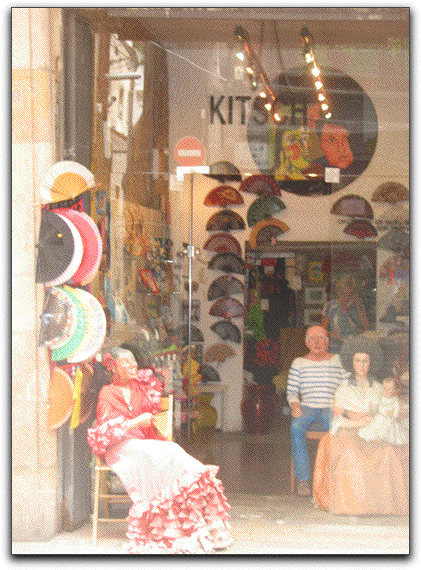
Barcelona, a city of mixtures of the intensely Catalan, yet, nonetheless, very much a part of Spain. Its Gothic Quarter Barri Gotti is overrun by tourists (primarily in their twenties) yet still has many shops on nearly every street that are haunts of the local population. It takes itself seriously with a number of significant museums, though someone has enough of a sense of humor to name a store Kitsch.

Our second full day in Barcelona we took the bus to the foot of Montjuïc, from the Latin: “Mons Judaicus.” We started here, both because it is the site (on the far opposite, sea, side) of an ancient Jewish cemetery, and also to get an overview of places we would explore that day: Gaudí’s Parc Güell (on the far left edge of the photo) and his Cathedral La Sagrada Família (the dark spires in the distance to the right). The large park on Montjuïc contains numerous museums and monuments. But, we focused our day on Antonio Gaudí.
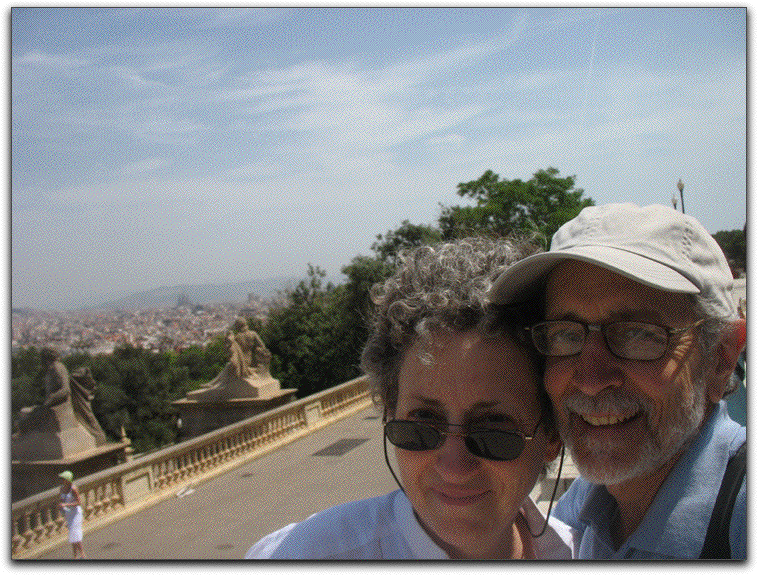
Mark had learned about Gaudí during Jr. High School in lessons about making arcs and parabolic curves by drawing straight lines [thank you Nisus Writer Classic!].
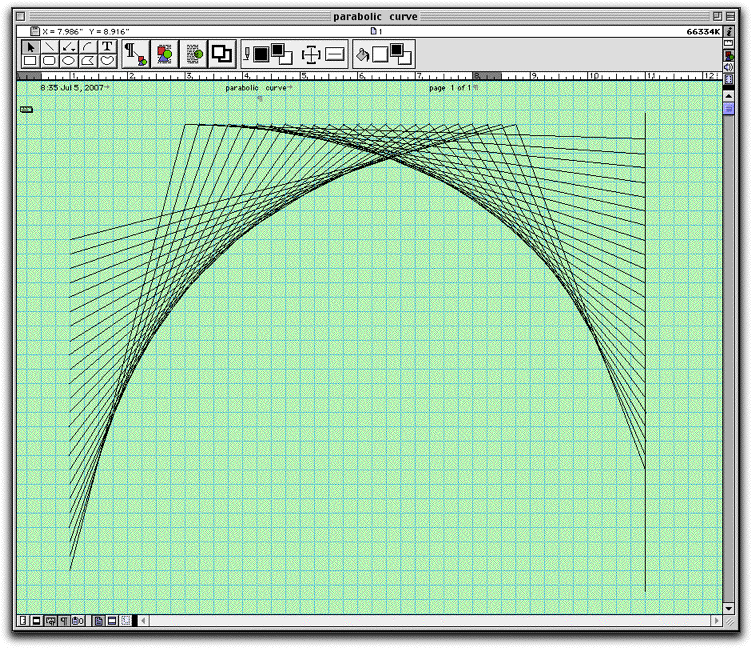
Their swooping beauty captivated him. Also, as Angelinos, both Mark and Debbie are familiar with the work of Simon Rodia’s Watts Towers. The work of Gaudí is clearly a professional precursor of Rodia’s folk art.
We took the metro, climbed the many steps to the top of the Parc Güell where we ate our lunch, listened to some of the public musicians and then descended to the structures designed by Gaudí. The playful, fanciful nature of the work shines in the profusion of shapes and color. Two spires of the Cathedral are faintly visible in the distance to the right of the “pineapple” to the left of Debbie’s head. The Gaudí reminded us also of the later work of Niki de Saint Phalle which we have enjoyed in San Diego and Jerusalem.
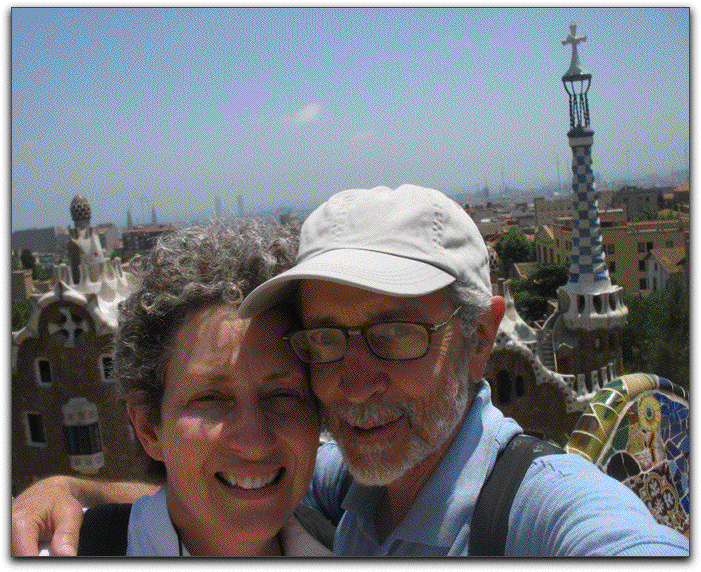
The curves continue everywhere. Below the flat area with all the benches (where we had our portrait for that day taken) sits a “colonnade” that almost sways.
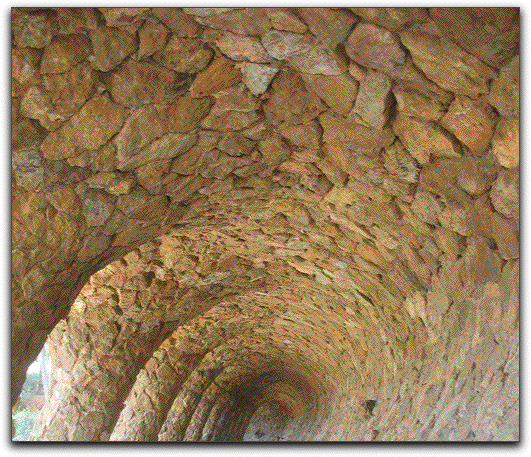
For a moment we almost felt as though we were back in Karnak with all its pillars,
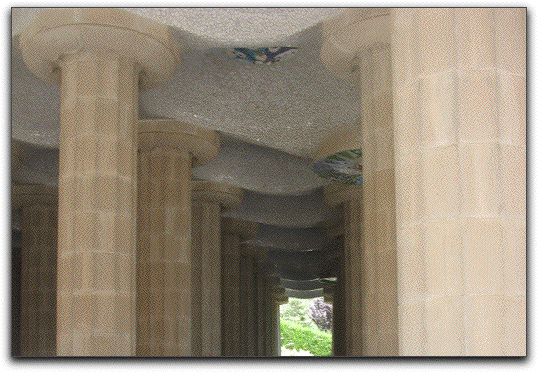
except these had “chandeliers” of ceramic tiles between them.
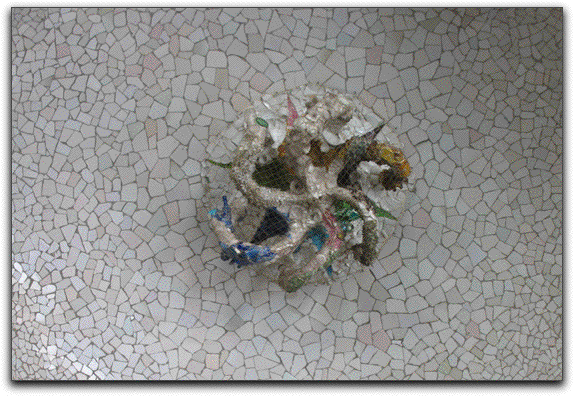
More walking brought us to the Cathedral, Gaudí’s La Sagrada Família.
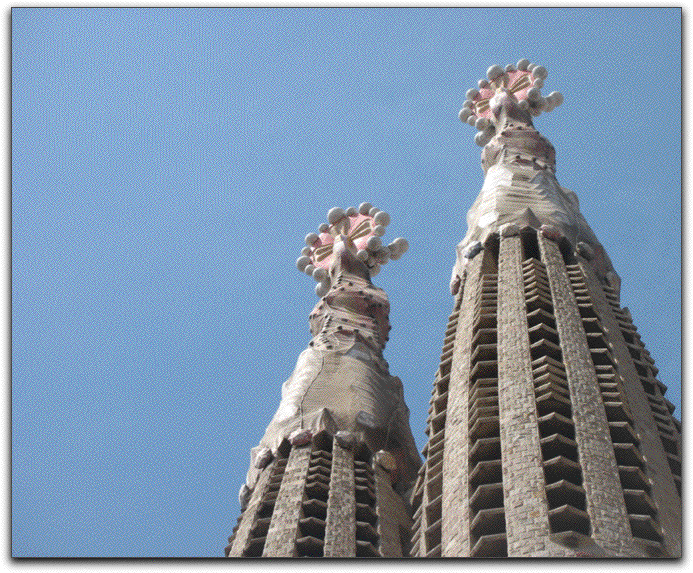
The building is not near completion… due date 2020… though they expect to celebrate the first Mass there in 2008 when the ceiling is finished. We shared the hushed, holy space with scaffolding
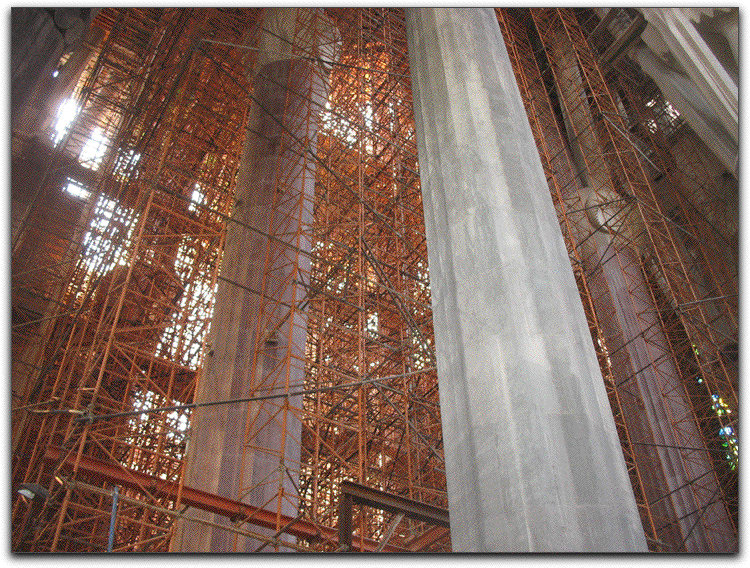
craftsmen at their tasks
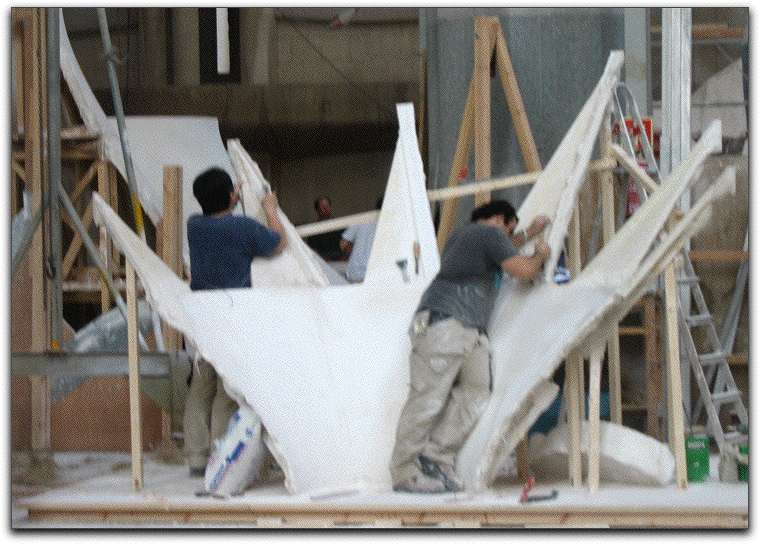
pieces readied to be raised to position
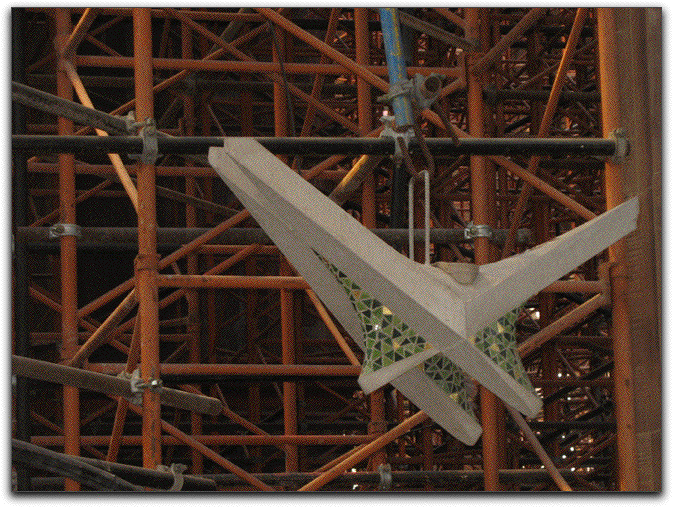
graceful stairwells that seemingly lead nowhere
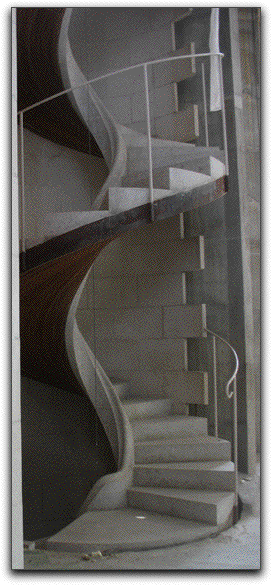
while above us the lacy ceiling soared and glowed
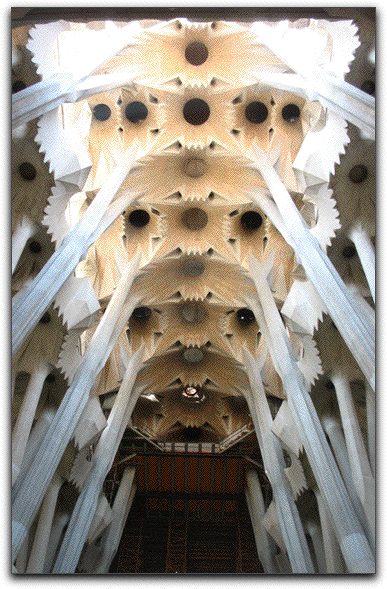
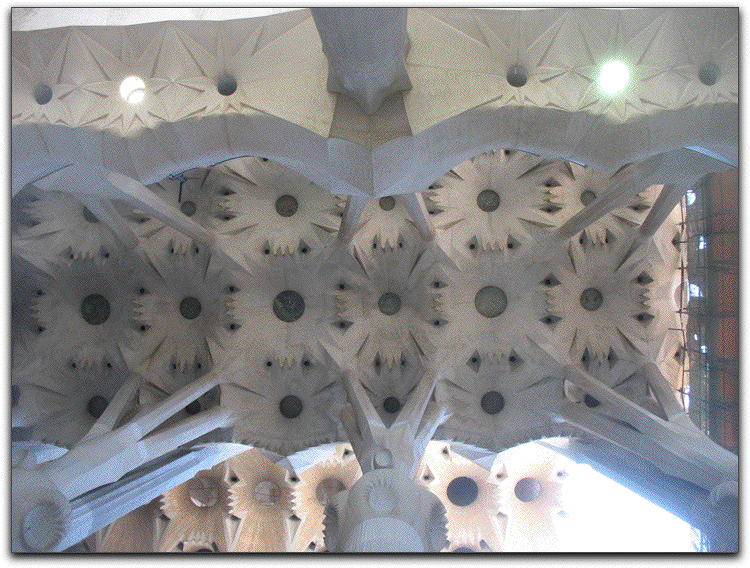
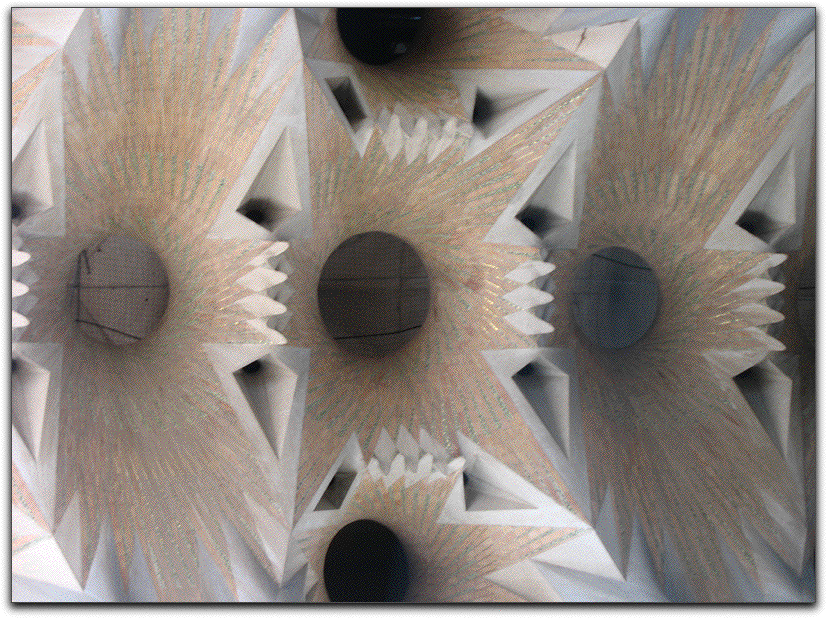
We encountered an interesting exhibit (from the introductory panel which was visible):
The Temple of Gaudí’s La Sagrada Família and, even, all its workers have always been the subjects of thousands of artists and photographers wanting to reflect this wonder through their eyes and their lenses. With a view of the Sagrada Família, the “Temple As Seen by its Workers” we wish to change the point of view: this time, the artists will be the same people that day after day make this great dream of Antoni Gaudí grow; for a day, the workers and the Temple of the Sagrada Família will cease to be the observed and will become the observers.The aim, then, of this photographic exhibition is to show how the workers see the Temple every day. From their own perspective, they have picked up their cameras and have captured what their eyes see every day: from themselves at work to the view they have from their place of work, through different perspectives of the things that thousands of tourists see every day.
For our last night in Barcelona, Debbie made sure we went to a concert.
We had seen posters of concerts at the little “Maoz” vegetarian “fast food” felafel shop. John Zorn was even due in town… but, we’d miss that one.
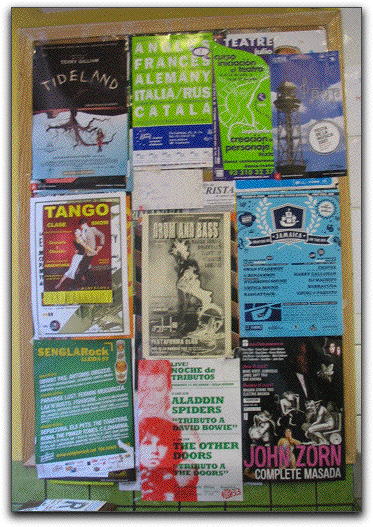
The concert Debbie had in mind was at the Palau de la Música Catalana designed by one of Gaudí’s rivals: Lluís Domènech i Montaner. It’s hard to decide which was the more unusual, the event or the place.
Jose Merce performed in “De Cajon!” billed as “Festival Flamenco de Barcelona.” We had no idea what to expect, though from her reading of Michener’s Iberia Debbie knew that the hall itself would be unique.
(with flash):
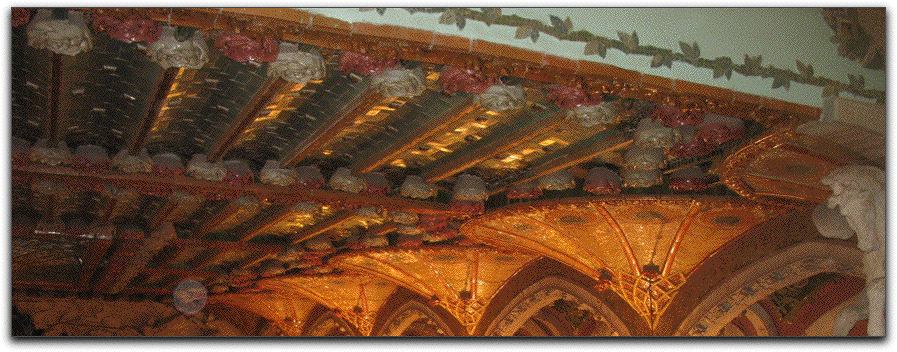
(without flash):
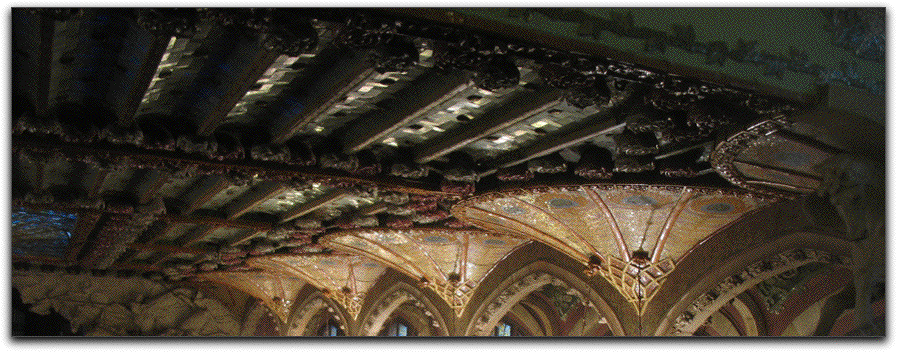
(an overview of the ceiling):
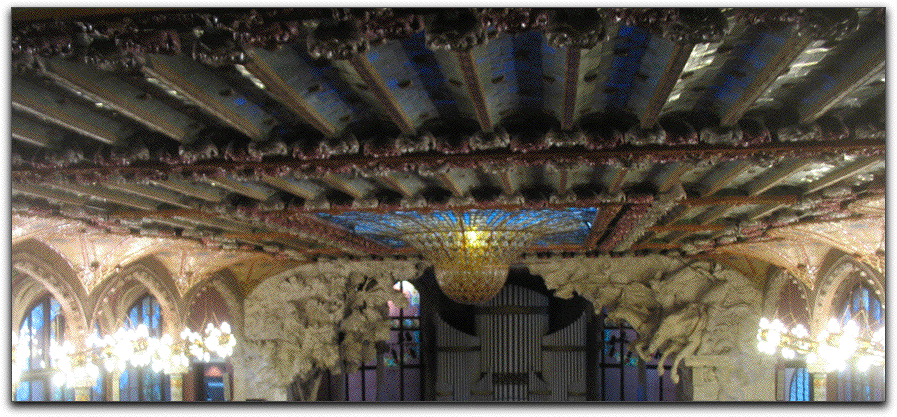
The hall was filled with people mostly in their thirties. Jose Merce and a guitarist performed onstage, alone, for most of the evening, though the guitarist opened with an amazing solo piece. At some points they were joined three hand-clappers).
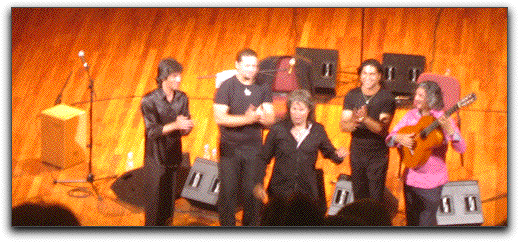
Whether the songs were in Spanish or Catalan, we have no idea. They were exciting and moving. Jose Merce sat during most of his singing, yet at certain moments he would excitedly stand up, jerk his right hand up into the air in exclamation to end. The audience loved the entire evening, applauding loudly and singing along at several points. And they demanded at least two encores.
We learned on arrival in Barcelona that the local municipal library has Free Wireless. All you need is a library card… since we were only “passing through” our passports worked just fine!